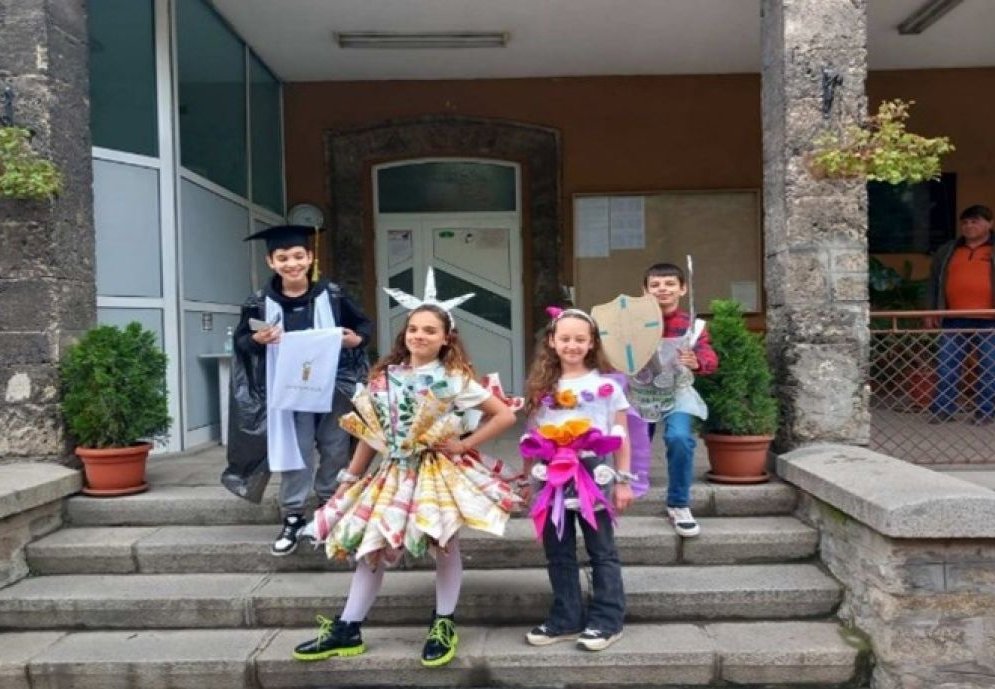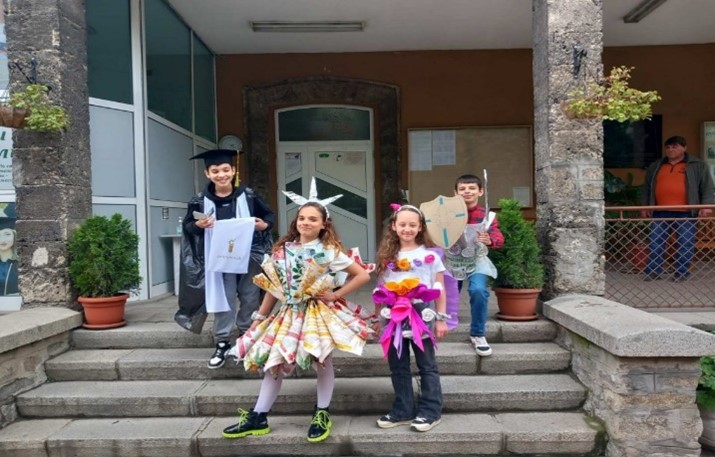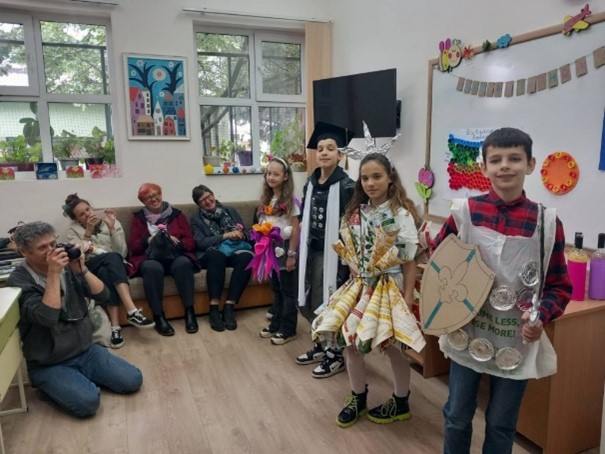

Fashioning sustainability: Creating a school fair of recycled clothing
Předcházení vzniku odpadu - plasty
Many plastics are used and disposed of in the fashion industry. Children can be stylish and eco-friendly by designing clothes with recycled garments..
Výsledek učení
By the end of this lesson, students will be able to:
- Understand the concept of fashion sustainability and the importance of reusing materials.
- Identify different types of recycled materials suitable for clothing creation.
- Develop skills in designing and crafting garments from recycled materials.
Promote awareness and encourage participation in sustainable fashion practices among peers and staff.


Potřebný čas
90 minutes
Potřebné vybavení
- Examples of recycled materials (old clothes, fabric scraps, buttons, etc.)
- Sewing machines, needles, thread, scissors, and other sewing tools
- Art supplies for decorating garments (paint, markers, beads, etc.)
- Worksheets for brainstorming ideas and planning designs
Popis aktivity
Introduction (10 minutes):
- Begin by explaining the concept of sustainable fashion and the growing movement towards reusing and recycling materials in clothing production.
- Share examples of designers and brands that specialize in creating garments from recycled materials.
Interactive discussion (15 minutes):
- Divide students into small groups and ask them to brainstorm ideas for clothing items that can be created from recycled materials (e.g., dresses, bags, accessories).
- Each group shares their ideas with the class. Write down key points on the whiteboard.
Presentation (20 minutes):
- Introduce the process of designing and crafting garments from recycled materials, including key considerations such as material selection, pattern cutting, and sewing techniques.
- Provide real-life examples and case studies of successful sustainable fashion projects and designers.
- Highlight specific strategies for ensuring durability and style in recycled clothing, such as reinforcing seams and adding decorative elements.
Hands-on activity (25 minutes):
- Divide students into teams and assign each team a specific type of garment to create (e.g., t-shirt, tote bag, headband).
- Provide worksheets for each team to sketch their designs, select appropriate recycled materials, and plan their construction process.
- Allow time for each team to work on their creations, offering guidance and assistance as needed.
Reflection and wrap-up (20 minutes):
- Ask students to reflect on their experience in designing and crafting garments from recycled materials and discuss any challenges they faced.
- Summarise the main points of the lesson and emphasise the importance of creativity and resourcefulness in sustainable fashion.
- Encourage students to showcase their creations at a school fair, inviting teachers, parents, and the wider community to view and appreciate their work.
Realizace aktivity
- Integrate across subjects: Incorporate sustainable fashion concepts into art classes (design and aesthetics), technology (sewing and crafting), and even social studies (global fashion industry impacts).
- Guest speakers: Invite local fashion designers or textile artists who practice sustainable fashion to share their experiences.
- School-wide initiatives: Implement school-wide programs like recycling drives for old clothes, fabric donation boxes, and workshops on basic sewing skills.
- Project-based learning: Assign projects where students research and present innovative ideas for sustainable fashion and design.
- Field trips: Organise visits to local thrift stores, vintage boutiques, or sustainable fashion shows to provide hands-on learning experiences.
- Community involvement: Encourage students to collaborate with local businesses, NGOs, and government agencies to support sustainable fashion initiatives and promote broader community involvement.
By integrating sustainable fashion education into the school curriculum, we can empower students to become creators of environmentally conscious clothing and inspire positive change within their communities.
